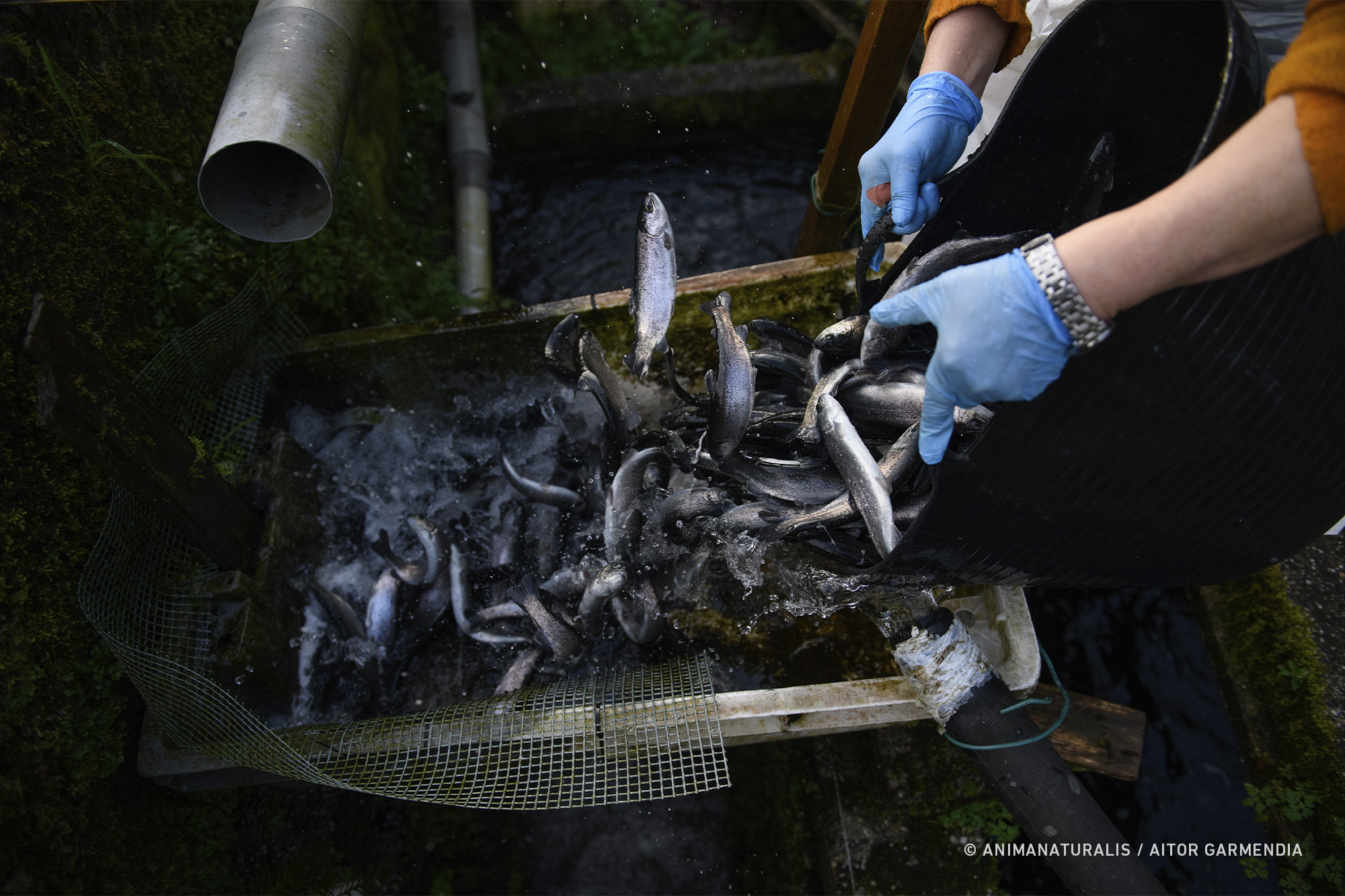Diseases and Health Risks

Diseases affecting rainbow trout in industrial fish farms are a direct consequence of overcrowding and stressful conditions. Most aren't notifiable under Regulation 2016/429, so there's limited information on their impact and no specific veterinary treatment protocols.
Common pathologies include bacterial infections like bacterial enteritis and furunculosis. These cause skin ulcers, internal infections, and high mortality if untreated.
Parasites pose another major threat. Fish lice (Argulus or Lepeophtheirus) commonly damage skin and gills, impairing breathing and causing suffering. Overcrowding enables rapid parasite spread, leading to mass infections requiring antibiotics/antiparasitics that harm animals and ecosystems.
Viral diseases like infectious pancreatic necrosis (IPN) are highly contagious and fatal. Infected trout require antibiotic treatments to control outbreaks threatening production.
Beyond animal welfare concerns, these diseases risk human health and environments. Antibiotic overuse in aquaculture fuels antimicrobial resistance - pathogens develop treatment resistance that endangers humans. Contaminated fish may transmit resistant infections to consumers.
Additionally, antibiotic residues pollute water and soil, contaminating aquatic ecosystems. Chemical antiparasitics and hazardous waste (contaminated plastics, medical waste, processing residues, oils) also devastate biodiversity by harming non-target species like wild fish, birds, and microorganisms essential for ecological balance. This pollution alters water quality and damages marine life throughout food chains.
Spain's Ministry of Agriculture acknowledges in its 2021-2030 Strategic Guidelines report that diseases remain "a significant limitation to aquaculture productivity and animal welfare." The industry admits insufficient epidemiological studies exist on disease incidence. While primarily concerned with economic losses from high mortality, they recognize widespread epizootics are difficult to control and restrict live fish movement.
Sources:
- Spanish Ministry of Agriculture, Fisheries and Food. (2024). Spain's Contribution to EU Strategic Guidelines for More Sustainable and Competitive Aquaculture 2021-2030 (p. 89).
https://www.mapa.gob.es/es/pesca/temas/acuicultura/esacui_21_30_sgp_v2_feb_2024_tcm30-636188.pdf
